7/13/2014
This first week in the tundra has been amazing! The area itself is so beautiful and full of unique and interesting landscapes. The combinations of wet and dry ground along with the mix of shrubs, mosses, and lichens makes for an ever changing feel to the land. Add in the watchful ground squirrels, an occasional moose, a pair of Peregrine falcons, and the bits and pieces of past human occupations, and this site becomes a perfect setting for current and future scientists. The weather has been very cooperative and downright warm! If it weren’t for the multitudes of mosquitoes, one could be out working in a t-shirt and shorts.
Most of the core students have been wearing their bug shirts and long pants to work in, and working is what they have been busy at! The group of nine core students has spent the first week surveying the land and choosing study sites that best fit the questions they are asking. After some initial observations and sampling, several of the sites have changed and each student has refined their question and their thinking about what is going on in the tundra and how they will measure.
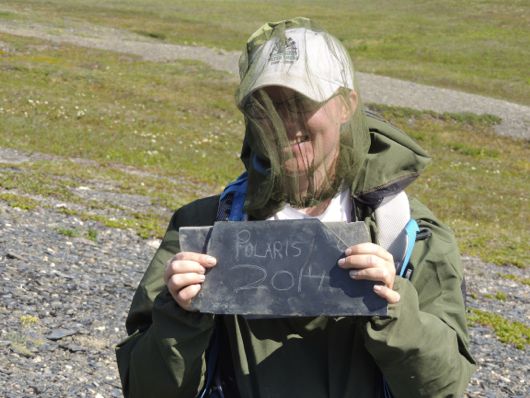
Kenzie is loving her Polaris experience!
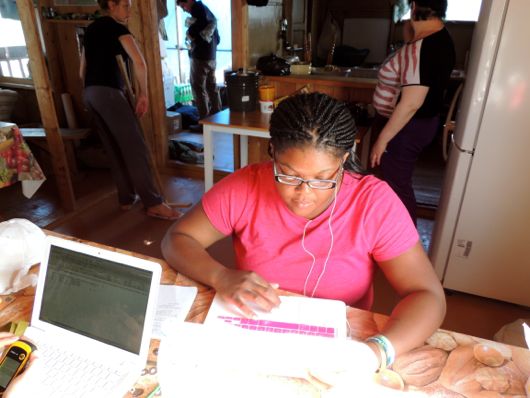
Jess entering her data after returning from a day in the field.
Kenzie and Jess have been working together looking at the factors that affect the ratios of carbon dioxide and methane in small ponds and wet areas. They are looking at the watershed KD 34, and have followed it downhill to where it enters the Kolyma River. At this point they both have enough water and soil samples to begin the process of analyzing them on the barge.
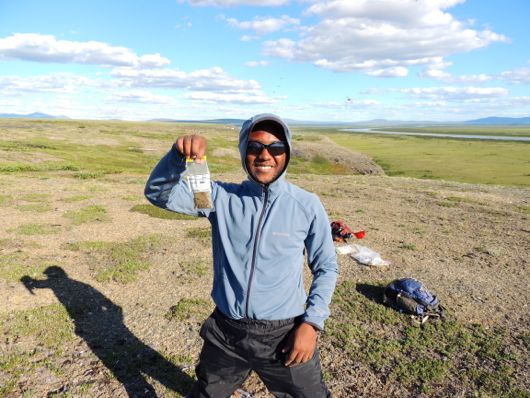
Nigel has found many places to observe ground squirrel disturbance.
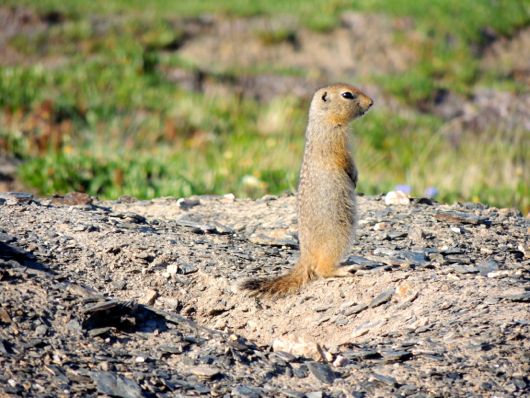
The ground squirrels keep an eye out for Nigel!
Nigel has decided to work along the main ridge where there are many communities of ground squirrels. The squirrel holes seem to be networked around various areas where the vegetation changes. Nigel is considering the interactions between these small mammals and the CO2 levels from the plants that surround their burrows.
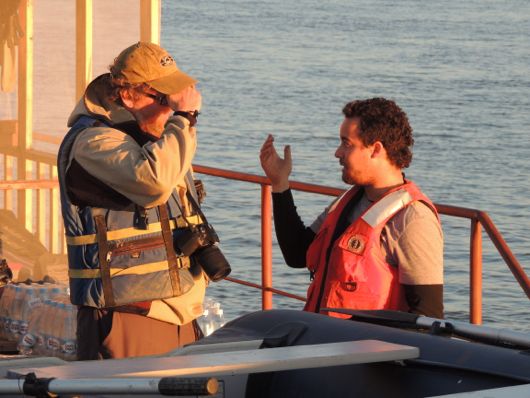
John and Luis discuss the next move.
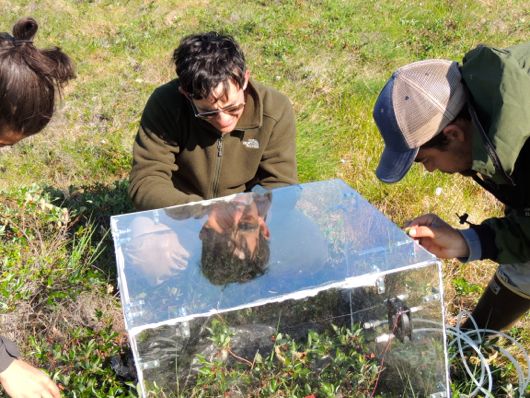
Sal and Luis taking flux measurements at their site.
Sal and Luis are asking similar questions about how the plants here are reacting to thaw depth and terms of transpiration and how they are distributed. After looking at a couple of different sites they have collected most of their data from the KD 3 watershed, which is north of the main road (Polaris Drive), and in between other worksites. They have begun the process of taking flux measurements with the gas analyzer and plexiglass chambers out to the site and collecting data on water and CO2 movement from the plants.
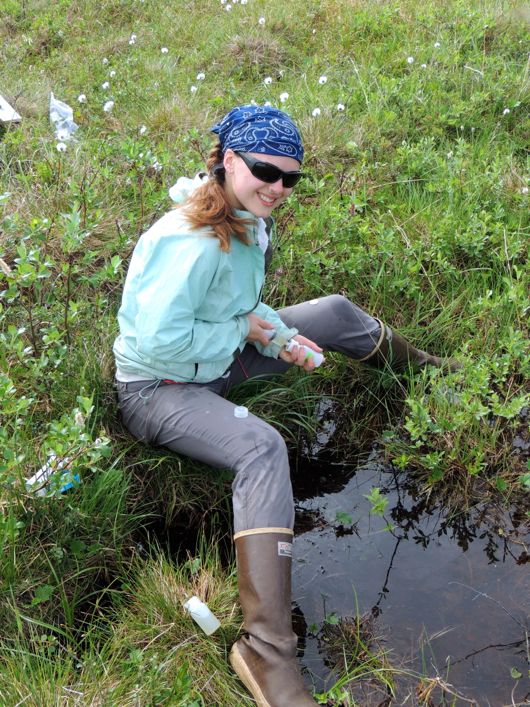
The beaded stream will work well for Megan’s water samples.
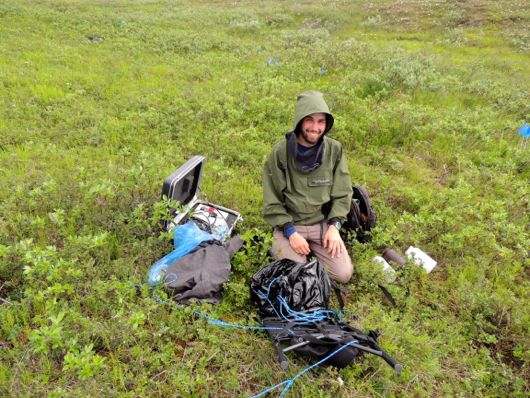
Being prepared for the field is just one thing that Julian does well.
Megan and Julian have both framed their questions around the movement of water, its chemistry and how it flows above and below the ground as it carries carbon and other materials through the tundra. Both of these core students have selected a site about 10 minutes by boat north of the barge in the watershed KD 28. It is a beautiful beaded stream system that presents many opportunities for questions. After finding suitable sites yesterday they will be going out and taking water samples as well as installing small wells into the soil.
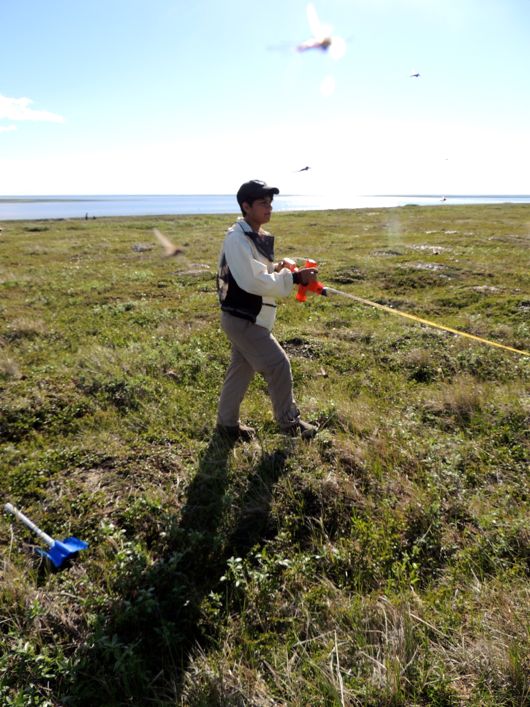
Erika measures out her plots before sampling.
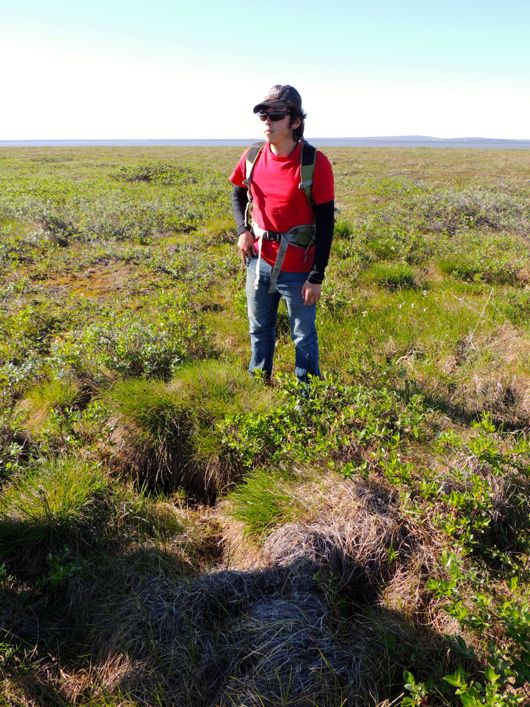
Homero is constantly observing the vegetation for patterns in the tundra.
Erika and Homero have been focused on the questions of how the thaw depths of the permafrost and the surface features known as frost boils are disturbing and changing the vegetation in the tundra. They have spent many hours already point-framing identifying and sampling the vegetation in the KD 3 watershed.
It is very exciting to watch the core students and listen to how their conversations and questions develop and evolve as they experience the tundra firsthand and receive insights from the faculty members. In addition, Greg has been so helpful about constructing GIS maps and instructing the students on including their own locations and data to the interactive database. This team has shown a huge amount of support for each other and a high level of understanding about what it takes to conduct successful polar science in the field.




Comments(2)-
-
Coach Melissa Hodgdon says
July 15, 2014 at 12:40 pmFun fact- Kenzie and Jess are also both college basketball players!
Question of the day- do mosquitos have any global purpose?
susan says
July 18, 2014 at 12:57 amawesome, John. just awesome